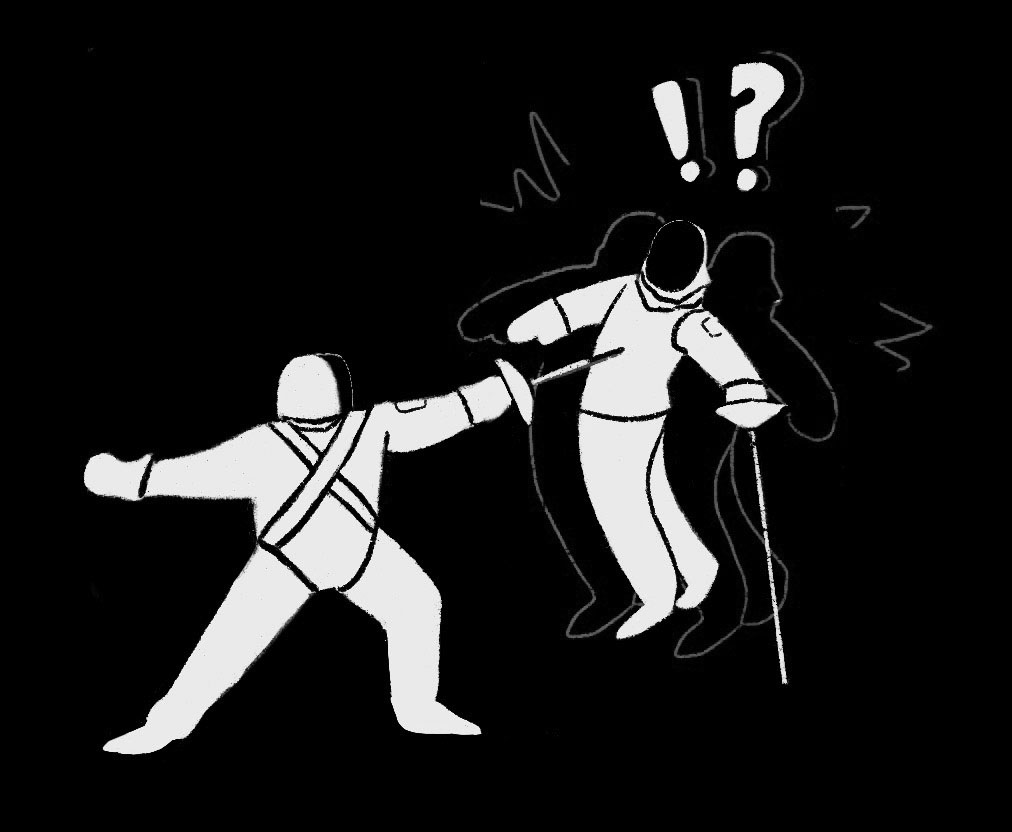

Fencing is generally associated with the swashbuckling scenes of movies like “Star Wars” and “The Three Musketeers.” The gleaming pointed swords and shouts of “en garde” leave many viewers eager to see who will be the victor.
When I tell people that I fence, the most common response is: “Do you stab people with swords?” Although the answer is yes, it is not exactly what people have in mind. Nowadays, while fencing still involves stabbing people with swords, it no longer involves declarations of honor and violence. Although the duels to the death portrayed in movies may be historically accurate, modern-day fencing is quite different.
There are three weapons in fencing with different techniques and compositions: foil, épée and saber. The goal of fencing is to reach either five or 15 points in an allotted time before your opponent does. Although the targets vary from weapon to weapon, none pose more of a threat than another. All three apparatuses have evolved from their sharp, deadly origins to blunted tips. While it is common for me to come home from practice or a tournament covered in bruises, in my eight years of fencing, I have never been severely injured.
Since fencing stemmed from war and duels of death, it is natural for people to assume there is danger involved. However, in the 121 years of modern Olympic-style fencing, there have only been eight instances of death, the most notable of which was Soviet fencer Vladimir Viktorovich Smirnov.
On July 19, 1982, Smirnov fenced German fencer Matthias Behr in the World Championships. In an unfortunate accident, Behr’s blade broke, pierced the mesh of Smirnov’s mask and entered Smirnov’s brain through his eye. Nine days later, Smirnov was pronounced dead.
This scary incident only made fencing a safer sport. Smirnov’s death prompted several changes to the fencing uniform, improving the safety of the sport overall. Now, blades are made of a stronger material, uniforms are made with Kevlar or other ballistic nylons and masks are two to three times stronger. In addition, fencers wear several layers of protection: a hard chest protector, an underarm, long-sleeved jacket, knickers (or pants), masks and, depending on the weapon, another electric layer.
Today, fencing is incredibly safe. A vast majority of injuries are pulled muscles and minor sprains, not including a multitude of harmless bruises. A study by the University of Oslo examined the percentage of athletes injured in the 2008 Summer and 2010 Winter Olympics. It concluded that fencing has an injury rate of approximately 3%, much lower than mainstream sports like soccer and basketball, with injury rates of 32% and 13%, respectively.
Some people may be surprised at those statistics because of fencing’s long history of death duels. In contrast to the brute force used in the old days of fencing, the sport is now more about strategy. This is especially evident in women’s foil, the event I compete in, which focuses more on technique and strategy instead of the physical strength in the men’s events. These controlled movements not only reduce the occurrence of physical clashes, but also the likelihood of injuries, such as concussions. Going into any tournament, I am more worried about pulling a muscle rather than being skewered by my opponent’s blade. My mind is so focused on the fencing itself that being injured is the last thing on my mind.
Although modern-day fencing is relatively safe, some still mistakenly believe that fencing teaches aggression. There is always a chance of injury when playing sports. However, proper training and significantly upgraded protection have made fencing a safe sport. The rigorous 15-hours-a-week training and intense competitions have allowed me to grow stronger both mentally and physically. People should give fencing a chance. It’s a sport like none other and offers incomparable life experiences.



